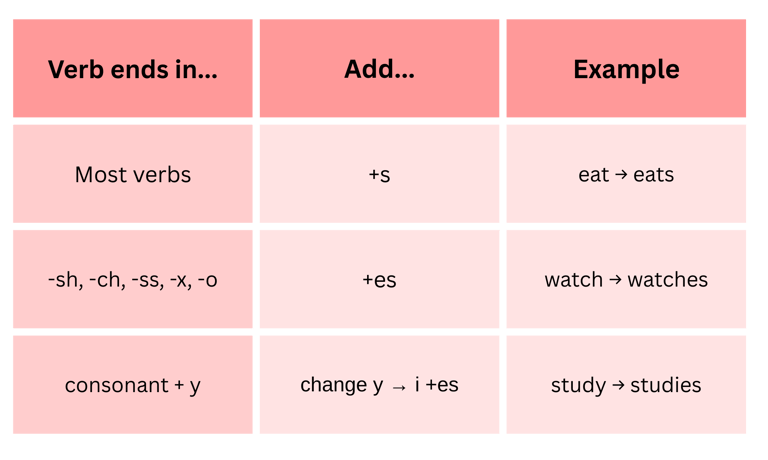Third Person “s” and Other Subject-Verb Agreement Tips
Level: Beginner to Pre-Intermediate
1 min read


“She go to school?” “He like pizza?”
Hmm... not quite! These are small mistakes, but they make a big difference in English. In this article, we’ll learn how to match the subject (who does the action) with the verb (the action) the right way.
1. What is Subject-Verb Agreement?
In English, the verb changes depending on the subject.
This is called subject-verb agreement.
I like sushi.
He likes sushi. ← see the “s”? That’s the third person “s”!
2. When do we use the third person “s”?
Add “s” or “es” to the verb when the subject is:
He
She
It
Or someone’s name (Tom, Momo, your friend, etc.)
Examples:
She plays the piano.
He watches anime.
Momo likes coffee.
It rains a lot here.
3. Remember - we only use "s" in a positive sentence
Yes - He eats pizza
No - He doesn't eats pizza / Yes - He doesn't eat pizza
No - Does he eats pizza? / Yes - Does he eat pizza?
4. Spelling Rules for Adding “s”
Practice Time!
Fix the sentences:
She go to school every day. → ________
They likes ramen. → ________
He does't likes dogs. → ________
Want to test your preposition skills and learn more about it?
We created printable worksheets with Japanese translations so you can understand better and practice more!
🔜 Coming soon — grammar bundles & worksheets will be available here!
Follow us on Instagram@kohaku_english_online for updates 💛
Disclaimer:
English has many exceptions, and sometimes native speakers break the rules too! The explanations here are meant to give you a strong foundation, but don’t worry if you come across something different in real life. With practice and exposure, it will all start to feel more natural!


© 2025. All rights reserved.
